Technology Background – Different ways to produce the music
How to move the air that makes the sound? A bit of a quandary, that – there are several ways … a cone or dome  made out of paper, plastic or metal with an attached magnet structure is most common these days. Vary an electrical signal to the magnet and this makes the whole thing move in time with the signal variations. Make the signal variations the music signal, and music is the resulting sound created by the air movement. The problem here is to make the cone or dome stiff enough that it precisely follows the input electrical signal. The cone/dome material flexes, it has to, nothing is perfectly rigid. Strengthen the material to make it stiffer and you will most likely increase the mass, which reduces the responsiveness of the system and so reduces the resolution of the sound. Material and magnet type can be improved, generally at a cost and with the usual law of diminishing returns.
made out of paper, plastic or metal with an attached magnet structure is most common these days. Vary an electrical signal to the magnet and this makes the whole thing move in time with the signal variations. Make the signal variations the music signal, and music is the resulting sound created by the air movement. The problem here is to make the cone or dome stiff enough that it precisely follows the input electrical signal. The cone/dome material flexes, it has to, nothing is perfectly rigid. Strengthen the material to make it stiffer and you will most likely increase the mass, which reduces the responsiveness of the system and so reduces the resolution of the sound. Material and magnet type can be improved, generally at a cost and with the usual law of diminishing returns.
Eminent Technology takes a different approach, at least as far as the midrange and treble parts of the audio spectrum are concerned. They use “magnetic planar” drive units for that. An electrically conductive aluminium track is etched onto a light Mylar film and is placed between an array of strong magnets.The audio signal is passed through the aluminium track, and the magnetic field so produced interacts with the magnets and causes the Mylar film to vibrate, producing the sound.
It’s the same kind of principle as electrostatic and ribbon speakers; a thin, lightweight diaphragm moving the air. The advantages are similar, too …. Low colouration, as little energy can be stored and released later. No need for boxy cabinetry, so another source of colouration is removed. High diaphragm ‘acceleration’ due to the low mass of the diaphragm, so resolution is very high. Excellent high frequency extension, once again due to the low mass of the moving material. There is a lot going for the approach!
The main disadvantage is that the excursion limit of the diaphragm is more restricted than for a conventional cone driver, in order to keep the driver within the linear region of the magnetic field, so less air is moved for the same driver area. This results in lower sound pressure levels and restricted bass extension. The way around this is to increase the diaphragm area – this of course increases the size of the speaker (full-range electrostatic and ribbon speakers can be very large!) and also increases the cost.
A way of addressing this problem is to produce a hybrid speaker, with upper frequencies produced by the thin diaphragm, and a conventional ‘cone in a box’ producing the lower frequencies. That’s the approach that Eminent Technology use in their loudspeakers. Some manufacturers of hybrids use ribbons to replace conventional dome tweeters and so only produce high frequencies with the ribbon driver. Eminent Technology, though, use ribbon drivers for both treble and midrange reproduction. This is the same kind of approach that was used in the Infinity RS2.5 ribbon hybrid speakers previously reviewed in Hifi Pig.
Eminent Technology & their Products
Established in the USA over 25 years ago, Eminent Technology have been quietly and successfully honing their product range.
The two hybrid speakers intended for stereo use are imported into the UK by A&D Audio, based near Portsmouth.
As well as these two speakers, Eminent Technology are well known for their long-established air-bearing tonearms, in fact that was their first product, and also the astonishing rotary subwoofer, it looks and works like an office fan!They also make a hybrid AV centre speaker.
The LFT-16a ribbon hybrid speaker ….
This is a three-way design that combines a deliberately slightly non-cubic sealed box (it has a slightly sloping rear panel) holding a 6.5″ aluminium-cone woofer. The solid wood front baffle panel projects rather more than half again the height of the woofer box and has a cutout in the upper part that holds an LFT midrange panel, measuring about 4″ by 6.5″ that radiates to the front and rear. Alongside it is a planar-magnetic tweeter measuring roughly 1″ by 2″ and radiating only forwards. The speakers are “handed”; the tweeters are intended to be inboard of the midrange drivers. The LFT-16 is 21.5″ H by 9.75″ W by 9.75″ D and weighs 10.5Kg / 23 lbs.
The wooden front panel is available in Oak, Walnut and Gloss Black.
The mid-range panel of the LFT-16a speaker uses a low mass foil/Mylar diaphragm with conductor traces etched (like a circuit board) with high resolution to obtain a uniform driving force over the entire surface area of the diaphragm. The high frequency tweeter uses a thin, lightweight diaphragm.
The midrange unit comes in at 250Hz, and the high frequency unit at 7.5KHz – so the latter is arguably more of a super-tweeter equivalent than a tweeter.
Recommended amplifier power is between 25 and 200 Watts …. although see later for an interesting lower powered budget alternative!
Efficiency is moderate to low, and specified at 85dB/W/m.
You can modify the tweeter level by small amounts by changing the connections (simple screw attachments) at the rear of the front panel, on top of the bass cabinet. Personally I preferred the middle of the 3 high frequency settings
Me? – I like the look of the speaker without the front covers on – but I guess not everyone will favour the rather retro-hitech appearance of the bare drivers. Grilles that cover the whole of the front baffle are provided and are attachable by hook-and-loop fasteners to give a much simpler, cleaner look.
And – at last! – how it sounds
Very good, very high resolution sound. In my view, you really do not get this level of musical resolution from ‘conventional’ cone & dome speakers in this price band.
Resolution ….
Quite exceptional!
Especially in the midrange and treble. In many ways this is what these speakers are all about. The bass is good and very enjoyable, but the higher frequencies excel like a good electrostatic, but with more dynamic clout and presence. Transient speed is wonderful, and the resulting clarity on vocals is very special. If you want to finally decipher those muffled words on that album you’ve been playing for the past 10 years, this is the speaker you need! Female vocals, in particular, are portrayed with stunning transparency, albeit with just a hint of sharpness.
Tonality ….
The overall impression is of a very musical sound (by which I mean it sounds like real music!); full of light and life. The tonal balance is a little on the light and bright side, although bass is not lacking. There are definitely warmer and weightier presentations to be had from other speakers, if that is where your preference lies.
There is a tendency for the sound in the mids and treble to be a little stark for my tastes. There’s a slight dryness to the midrange that, depending on the tonal balance of accompanying equipment, can make vocals, for example, sound a bit dry. Mind you, I’ve heard similar tonal characteristics with several ribbon or quasi-ribbon speakers, so I suspect that it is just a frequent characteristic of the species. Some people really love this kind of presentation, especially rock or dubstep/dance fans! The slight tonal thinness allows a faster, more dynamically impressive sound with enhanced ‘slam’. Fair enough – horses for courses. I recently heard Yello’s Touch album on such a system (full range Apogee ribbon speakers) and it was amazing!
System Synergy ….
Personally I prefer to use these speakers in a system where other components are a bit on the warm side. My Morgan Audio 500 valve pre-amp is a lean-mean detail machine, and much though I love it I have to confess that it is not a good match for the LFT-16a speakers. Much better is my Bent Audio NOH TVC passive pre-amp – that’s a bit on the smooth and warm side, and works very well indeed with these speakers. A fabulous sound – very high resolution, but with a good dollop of realistic tonal warmth
Bass ….
I was impressed by the bass, especially for the size of the cabinet. Prior to getting the new aluminium-coned version of the speaker, I spent a few days with the previous black paper coned original version. Hmm, I wasn’t overly enamoured with the bass from the original, finding it a bit thuddy and disconnected from the rest of the frequency range. Happily, the new aluminium-coned LFT-16a addresses these issues pretty much completely. The bass is nicely continuous and integrates quite seamlessly with the rest of the range. No more thumpy emphasis, either – smooth but powerful and with a surprising amount of bass kick, extension and resolution.
The astonishingly deep and taut synthesised bass on the track ‘Blues for Klook’ on Eddy Louiss’ album Sang Mele is reproduced remarkably well. There is genuine deep bass there and the music does not feel short-changed to a marked degree. Mind you, my own much larger floorstander MBL speakers do seem to delve a half octave deeper and the walls do seem to flex …. Nonetheless, the LFT-16a is a quite small standmount speaker and does itself proud.
Soundstaging ….
The LFT 16a provide a well-chosen balance between airy & spacious and focussed and articulate.
Stereo spread and focus are very good, although image depth tends to get a bit truncated as volume levels increase, but nonetheless remains enjoyable. The perception of 3D depth is a little ‘semi-circular’ in that there is more image depth apparent at the centre than at the edges; this is particularly noticeable when listening close to the speakers, in the near-field.
An interesting experiment with amplification
A crazy little diversion …
Previously reviewed on Hifi Pig is the Mini-T amplifier from the UK supplier Amptastic. It’s a tiny 8wpc t-amp using the TA2020 chipset. I’ve had some surprising results with this marvellously transparent and low price amplifier on what would seem to be quite unsuitable – and unsuitably expensive! – speakers. To my ears, it works marvellously well on my MBL speakers which cost around 400 times as much as the Mini-T.
So, how does the Mini-T cope with the LFT-16a?
Well, you’ve probably guessed already – there wouldn’t be any point in even raising the issue if the results weren’t worthwhile. Yes, it sounds very good, and I enjoyed the combination very much. Surprisingly, it goes loud enough as well. Unless you want to seriously flex the walls with high sound pressure levels or have a much larger room than my own 12×20 footer (4x6m) this combo works well.
Does it sound as good as my own amplification favourite, the 250wpc Parasound Halo A21? No. Listening to the combo alongside the LFT-16a’s UK distributor, Darren, we both agreed that if you could afford the Bent Audio / Parasound pre-amp / power amplifier pairing then that is money well spent. But we both also felt that the Mini-T worked well enough that it is a very viable pairing at the price. If you can’t afford ‘big bucks’ for your whole system, but can stretch to the cost of the LFT-16a plus a bit more for a decent CD player or a cable from your PC or SqueezeBox, then another £55 or so for a Mini-T amplifier will yield surprisingly enjoyable results. I’d recommend it, in fact.
By the way, trying the Mini-T amp with the original black paper-coned bass driver version of the LFT-16a was a sonic disaster – very bright and shrill with bass well down in level. I suspect that the new aluminium bass cone has necessitated a redesign of the crossover which makes the new model much easier to drive.
The Grilles
They had very little affect of the sound – if anything, they reduced the slight high frequency edge to the sound. I think I prefer the speakers with the grilles on, but there is very little in it.
Summary
I liked these speakers, I enjoyed my time with them very much indeed.
Very good sound and very good value for money. If you are after a smallish speaker with excellent transparency and detail, allied with impressive dynamic scale and impact, and your budget can stretch to £1,200 in the UK, then do get them on your shortlist – I’m sure you will be impressed!
In fact, I shall be reviewing their bigger brothers, the floorstanding LFT-8b next. Much bigger and twice the price – I can’t wait!
Review system: MBL 116F speakers, Parasound Halo A21 power amp, Bent Audio NOH TVC passive pre-amp and Morgan Audio 500 valve pre-amp. Beresford Bushmaster DAC, Pioneer PD-S505 CD transport. Pioneer PL-71 turntable, Zu Audio-modded Denon 103 MC cartridge, Trichord Dino/NCPSU phonostage
Want to read more hifi reviews?





















































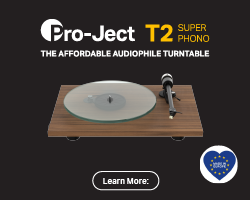









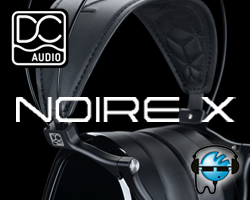














































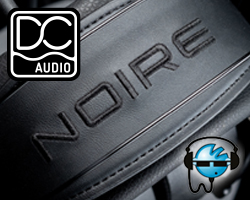










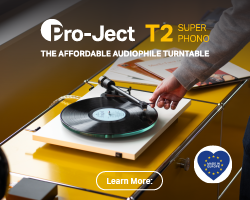
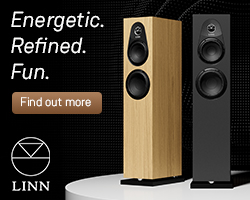





















































You must be logged in to leave a reply.